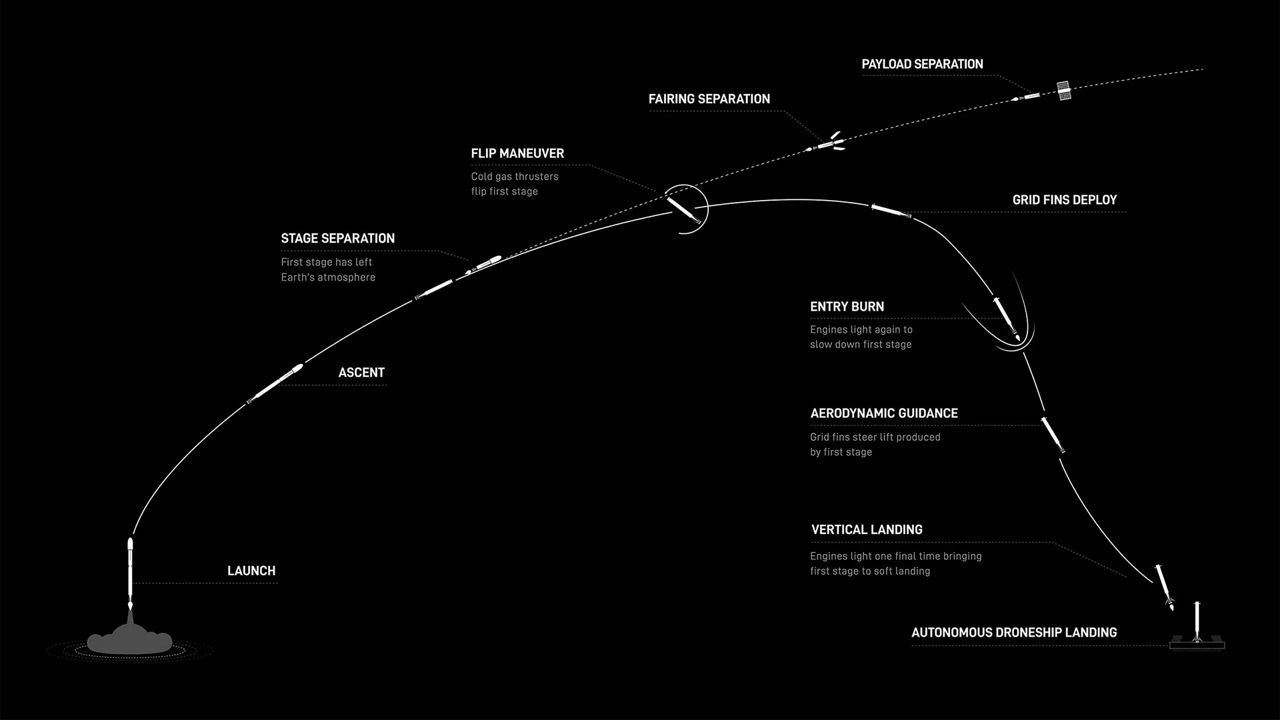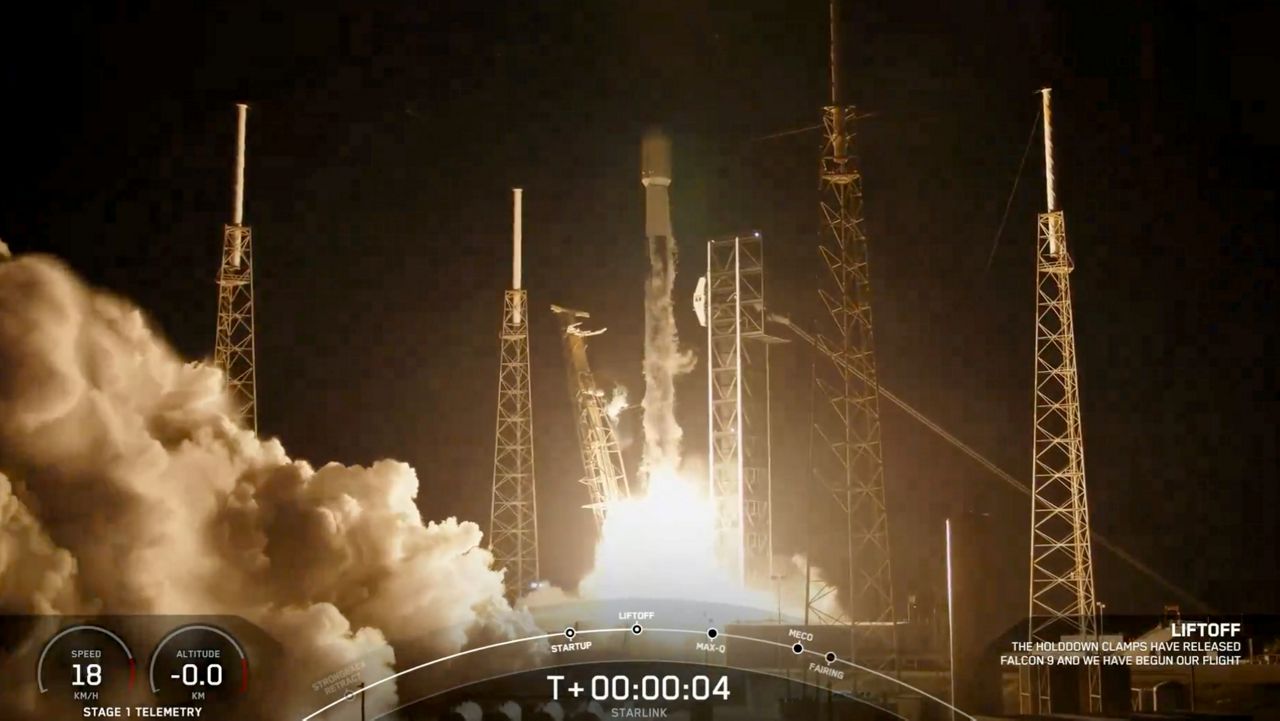CAPE CANAVERAL SPACE FORCE STATION — The weather may have been a bit uncertain and the time may have been pushed back, but ultimately, Friday night’s launch of SpaceX’s Starlink satellites was successful.
What You Need To Know
- SpaceX will launched the Starlink 10-1 mission Friday night
- The liftoff took place at Space Launch Complex 40
For the Starlink 10-1 mission, SpaceX sent up its Falcon 9 rocket from Space Launch Complex 40 at Cape Canaveral Space Force Station just before 10 p.m.
SpaceX owns the Starlink company.
The weather had been a concern, with the 45th Weather Squadron giving a 60% chance of good liftoff conditions.
The constraints against the launch were: anvil cloud, cumulus cloud and surface electric fields rules.
Sweet 16 launch
This is Falcon 9 booster B1069’s Sweet 16 launch. The first-stage booster has a number of missions under its belt already:
- CRS-24
- Hotbird 13F
- SES-18 & 19
- OneWeb
- 11 Starlink missions
After the stage separation, the first-stage rocket is expected to land on the droneship Shortfall of Gravitas that will be in the Atlantic Ocean.

About the mission
There will be 22 Starlink satellites that will join the thousands already in low-Earth orbit.
Dr. Jonathan McDowell, of Harvard-Smithsonian Center for Astrophysics, has been recording Starlink satellites.
Before this launch, McDowell logged the following:
- 6,118 are in orbit
- 5,232 are in operational orbit




